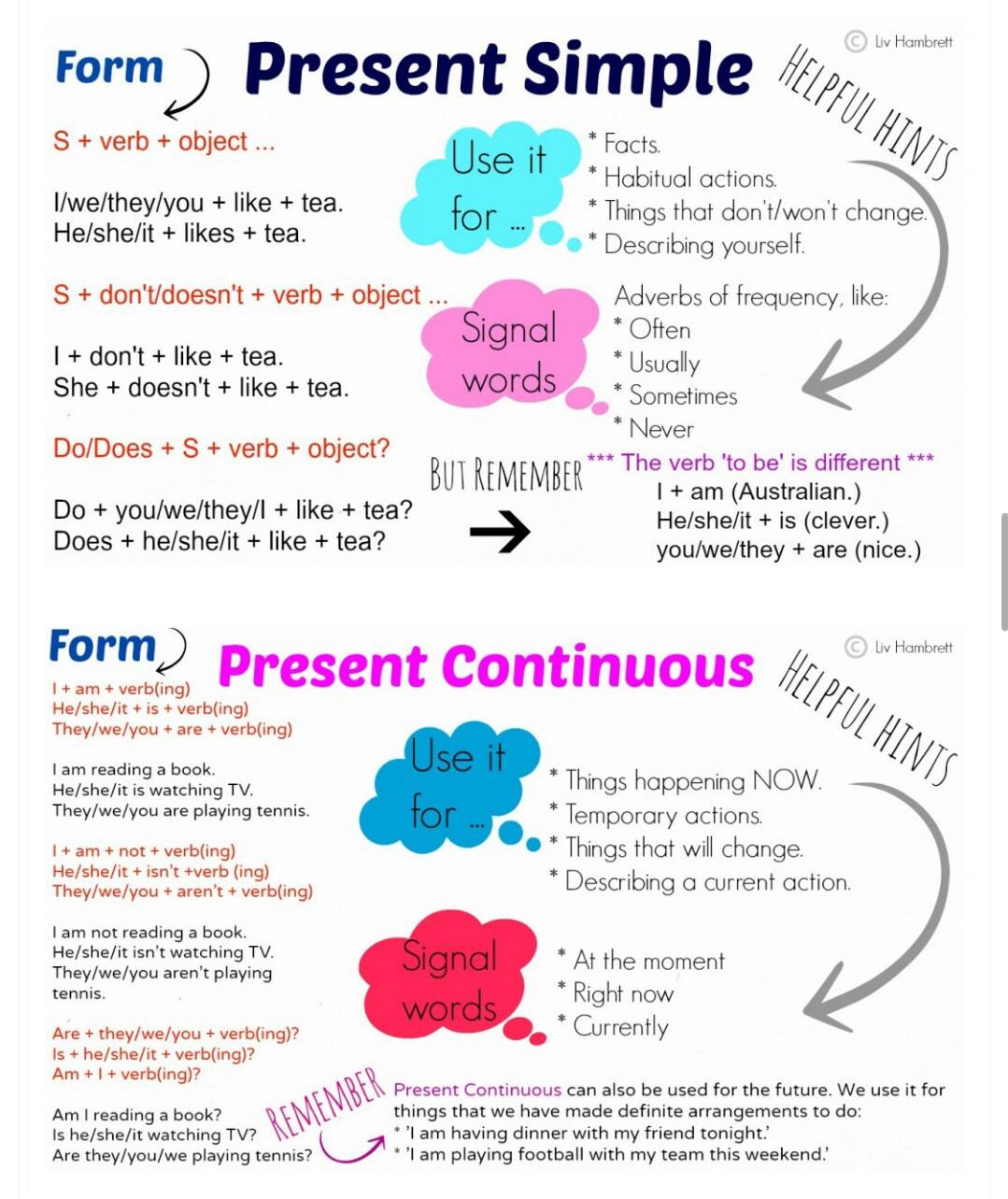Present Simple And Present Continuous
Continuous Progressive Present Continuous Present Continuous Present Progressive Present simple and present continuous. We can use the present simple to talk about things we do regularly. We can use the present continuous to talk about things we are doing now. I play basketball every Sunday. I'm playing hockey now. She eats fruit every day. She's eating an apple now. How to use them. For the present simple, add s or es for .

Present simple short forms We normally use short forms in spoken English do not don t does not doesn t Present continuous short forms We normally use short forms in spoken English am not m not is not isn t s not are not aren t re not Present simple vs present continuous Use Download full size Present Simple и Present Continuous Как правило, все те, которые только начинают изучать английский язык, сначала проходят два времени – the Present Simple (простое настоящее время) и the Present Continuous (простое продолженное время). Этому есть свое объяснение.

Present Simple And Present Continuous
The present continuous is made from the present tense of the verb be and the ing form of a verb We use the present continuous to talk about activities at the moment of speaking I m just leaving work I ll be home in an hour Please be quiet The children are sleeping Present continuous 1 Present continuous 2 future plans or arrangements Present simple vs present continuous. Present simple vs present continuous past simple excercise snoablePresent simple and present continuous mary glover.

Present Simple And Continuous Chart For 5th 6th Graders

Let s Learn Present Simple Present Continuous Yuditra Farmana
Present Simple Present Continuous Present Simple Present Continuous Present Simple Present Continuous Present Simple Present Continuous Some verbs are normally used in the present simple and not in the present continuous. Here are some of them: know, suppose, think, understand (mental process verbs) admire, adore, detest, hate, like, respect (verbs expressing feelings).
Simple Present Present Progressive infinitive 3rd person singular infinitive s I speak you speak he she it speaks we speak they speak form of be and verb ing I am speaking you are speaking he she it is speaking we are speaking they are speaking Exceptions Exceptions when adding s For can may might must do not add s What is the difference? I speak English – is in the Present Simple tense I am speaking English – is in the Present Continuous tense When do we use the Present Simple and when do we use the Present Continuous? Let’s look at each one… PRESENT SIMPLE TENSE We use the present simple tense: 1. For facts or things that are always true or.